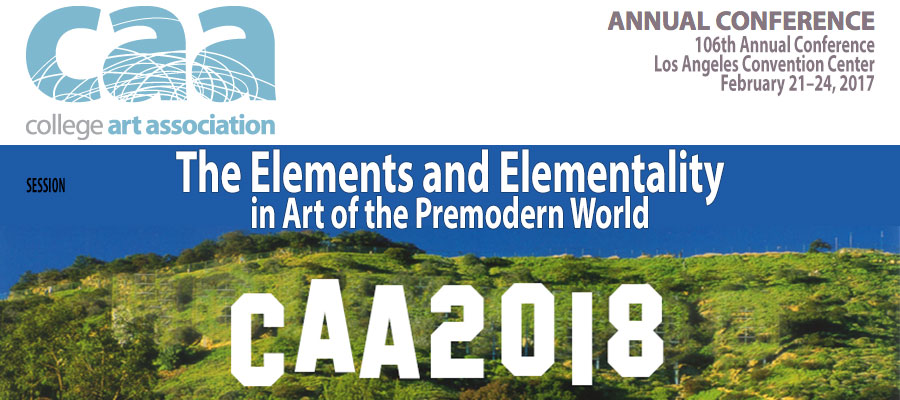The Elements and Elementality in Art of the Premodern World, 106th College Art Association Annual Conference, Los Angeles Convention Center, February 21–24, 2017
Few truths had broader currency in the premodern world than the compound nature of the cosmos and its contents. Plato, writing c. 360 BCE, popularized a harmonic system of matter comprising four elements: fire, air, water, and earth. A separate tradition matured in the Han dynasty (201 BCE–220 CE) of China, in which cyclic transformations of five elemental phases—wood, fire, earth, metal, and water—governed all phenomena. Across traditions, whatever their number or identity, the elements formed the very fabric of rationality and reality. Paradigmatic, they were bound up with ideas of order, form, composition, and perceptibility. The abstraction and simplicity of the Greek and Chinese systems made them engines of natural philosophy, readily adapted to local exigencies across Europe, Africa, and Asia. Whereas comparing these two elemental traditions has interested historians and philosophers for centuries, their visual dimensions remain largely unexamined.
This panel explores the elements and elementality in and among the art of premodern cultures, from any part of the world. We define the elements broadly, as narrative subjects, schematic principles, objects of empirical inquiry, agents of transformation, matter and media, factors affecting viewership, etc. By taking a synoptic view, we presume a degree of incommensurability, which, we believe, can yield novel analytics. Our aim is twofold: first, to develop more precise comparative vocabulary in order to lay the groundwork for further intercultural conversation; and second, to analyze the many ways that knowledge of the elements was manifest in visual and material form.
Session Chairs
Michelle M. McCoy, University of California, Berkeley
Megan C. McNamee, CASVA, National Gallery of Art
